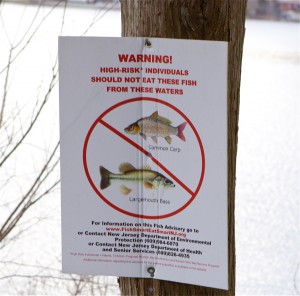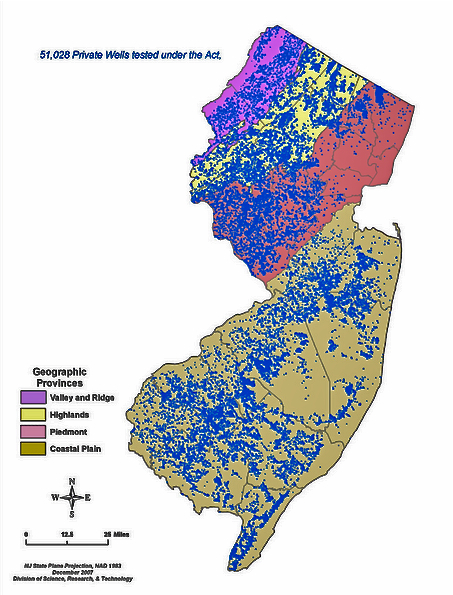Greenhouse Gas Emissions Story Lost in the Smoke
National Story: Obama brags about record oil and gas production
State Story: Impossible to meet deep GHG emissions reductions required by NJ’s Global Warming Response Act via reliance on natural gas.
The Bergen Record ran a story about EPA’s greenhouse gas emissions reporting data (see: PSE&G Bergen Station tops emission list
PSE&G’s Bergen Generating Station in Ridgefield releases more greenhouse gases into the air each year than any other large industrial source in New Jersey, according to a new federal report.
The Environmental Protection Agency’s report is the first-ever list of how much carbon dioxide, methane and other greenhouse gases are released by large industrial sites and landfills nationwide. There are 98 such facilities in New Jersey, which release a combined 26.2 million metric tons of gases each year.
WooHoo! First ever!!
But calm down, don’t go getting excited about anything, the story is much to do about nothing.
I’ll just note a few brief points about the real significance and what the focus of the story should have been:
1. National Story: EPA fails to regulate greenhouse gas emissions
Greenhouse gas emissission reporting is an alternative to regulation of emissions.
EPA has yet to adopt mandatory GHG emission reduction regulations under the Clean Air Act.
The new EPA GHG reporting program is an analogue of the Toxic Release Inventory (TRI) program.
The naive premise of these disclosure programs is that industry will be shamed into making voluntary emissions reductions once the public is made aware of the data.
The premise is false – voluntary measures can not and don’t work. Disclosure merely prompts various gaming strategies to create the paper appearance of reductions.
But there are alternative policy tools that work to reduce emissions – the basic choices are mandatory regulations or market prices.
But reporting requirements that are not linked to either regulation of emissions or setting a market price on emissions are ineffective.
This is all made obvious when one notes that the EPA GHG emissions reporting program was signed into law by President Bush. As EPA noted:
On December 26, 2007, President Bush signed the FY2008 Consolidated Appropriations Act which authorized funding for EPA to ‘‘develop and publish a draft rule not later than 9 months after the date of enactment of this Act, and a final rule not later than 18 months after the date of enactment of this Act, to require mandatory reporting of GHG emissions above appropriate thresholds in all sectors of the economy of the United States.’’ Consolidated Appropriations Act, 2008, Public Law 110–161, 121 Stat 1844, 2128 (2008)
We all know that President Bush was no champion of climate change or EPA. This is just more Obama continuity with Bush.
2. State Story: NJ’s largest emissions source is a natural gas plant
PSEG Bergen Generating Station is fired by natural gas.
Natural gas is supposed to be a “clean fuel”, right? A “bridge fuel” to a green energy future, right?
WRONG! (“clean” natural gas just another perverse part of The Twilight Zone of Energy Policy).
Governor Christie’s Energy Master Plan promotes a massive increase and heavy reliance on natural gas.
Scientists have found that the lifecycle greenhouse gas emissions of natural gas are as bad or possibly worse than coal, as I wrote:
Climate Benefits of Natural Gas May Be Overstated
http://www.propublica.org/article/natural-gas-and-coal-pollution-gap-in-doubt
The Propublica article incudes this link to EPA technical documents on revisions of greenhouse gas emissions factors for natural gas:
http://s3.documentcloud.org/documents/29077/new-epa-data-subpart-w-tsdf.pdf
We can not possibly meet the deep GHG emissions reductions required to comply with NJ’s Global Warming Response Act via an energy strategy or EMP that promotes natural gas.
3. State Story: RGGI is kicking a dead horse – one that deserved to die anyway
The RGGI game is over until Governor Christie is gone or the Democrats in Trenton grow a spine.
It is a useless exercise to waste bullets shooting that dead horse.
RGGI was fatally flawed anyway, and deserved to die – unless real emissions reduction based caps and enforceable measures were injected.
Why ignore the NJ Global Warming Response Act and focus on RGGI?
If you want to focus on RGGI, why are EPA data not compared to RGGI caps and NJ Global Warming Response Act targets and DEP emissions inventory?
Why fail to criticize Obama and EPA’s abject failure to move forward on the global warming front? Which brings us to #4.
4. National Story: Obama Collapse
My goodness, forget about Bill McKibben’s misguided praise of Obama’s Keystone XL.
The man has totally collapsed on energy and global warming policy – far worse than Texas oil man Bush (as we’ve written here for some time).
Obama State of the Union address BRAGGED about expanding oil and gas production and yesterday Obama announced 21 million acres of Gulf of Mexico oil and gas leases. From the SOTU:
Nowhere is the promise of innovation greater than in American-made energy. Over the last three years, we’ve opened millions of new acres for oil and gas exploration, and tonight, I’m directing my Administration to open more than 75 percent of our potential offshore oil and gas resources. Right now, American oil production is the highest that it’s been in eight years. That’s right – eight years. Not only that – last year, we relied less on foreign oil than in any of the past sixteen years.
Where is the ENGO outrage over that?
5. State Story: NJ has had its own GHG emissions inventory for over a decade
NJ has a GHG emissions inventory program.
It was created by another Republican Governor who opposed regulation, named Christie Whitman.
Republicans love this kind of voluntary fluff that creates the appearance of progress, but requires business and industry to do nothing to improve their environmental performance.
But current Governor Christie has gone so far to the right he’s blocked even that lame Whitman emissions inventory program, see: CHRISTIE SHREDS NEW JERSEY CLIMATE CHANGE PROGRAMS – Kills Emission Reporting, Diverts Green Energy Fund & Defunds Climate Office
Other huge issues are ignored too, for example, issues that are ignored and/or not quantified, including:
- public health costs of air pollution caused by carbon power
- $120 billion annual environmental costs of coal power
- multi-billion dollar net benefits of environmental regulations
- (or some of the other absurd aspects of NJ energy policy).
Now these are the issues that ENGO’s should be focused on and the press should be reporting.
But I hear crickets.






